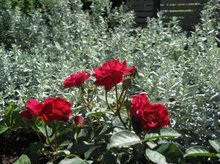
Gardening in Winter does not have quite the same appeal as it does in the Summer Months, for obvious reasons! But at this time of year most of the vegetation has died back and with a little imagination an effective garden plan can be drawn up.
If you have a blank canvas great, if not be ruthless. Cut back hard or rip out all the unsightly and under performing elements of your garden, this is no time for sentiment, get stuck in and you will reap the rewards. Believe me the hard work you do now will save you from a lot harder work in a couple of months time.
Now you are staring out of your window thinking ok so the 'jungle' has disappeared, but what the heck do I do now? If you have definite plans for your garden and are in complete control of situation good for you ( I hate know-alls!) go away and don't read any further. Most probably you are not in this category and that makes you my friend so I will try to help you.
Designing your garden
Firstly use your imagination thats what its there for!
Now the easy bit. A lot of factors will actually help you in your garden design, some of these being
The size of your garden.
A small garden would seem even smaller when stuffed full of quick growing rambling bushes and perennials.Its far better to create the illusion of space by using raised beds and curves instead of straight lines. Another excellent idea is to create different areas separated by a row of small bushes or a bridge for example.
The aspect
The amount and intensity of sunlight landing on your garden varies greatly throughout the day. In Britain and the USA a South facing garden will endure the maximum amount of sunshine and plants such as the rock rose, lavender, hebe and most types of fuchsia will thrive.
Conversely a North facing garden will receive much less sunshine, therefore shade loving plants such as hostas, ferns, mahonia and camellia would be the natural choice.
Remember there are no hard and fast rules but please check up on the plant species requirements before planting.
Soil type
This too can pre-determine a selection of plants available to achieve the maximum effect. There are six main soil types which are: sandy, loamy, chalky/alkaline, peaty/acid, silty and clay. Some plants can handle most of these conditions where as others will only tolerate one or two.
There are oodles of resources on soil types and appropriate varieties of plants, do your homework and give your garden a chance!
Get Ideas For Your Garden
There is no shortage of gardening shows on tv, there are dozens of gardening/landscaping publications and the internet is bursting with expert gardeners offering advice.
How many ideas do you need!
Good luck with your garden planning, once you have mastered the basics you'll wonder what all the fuss was about. Oh and don't let the bad weather put you off.
May the Forks be with you!
Planning a New Garden
Subscribe to:
Posts (Atom)





